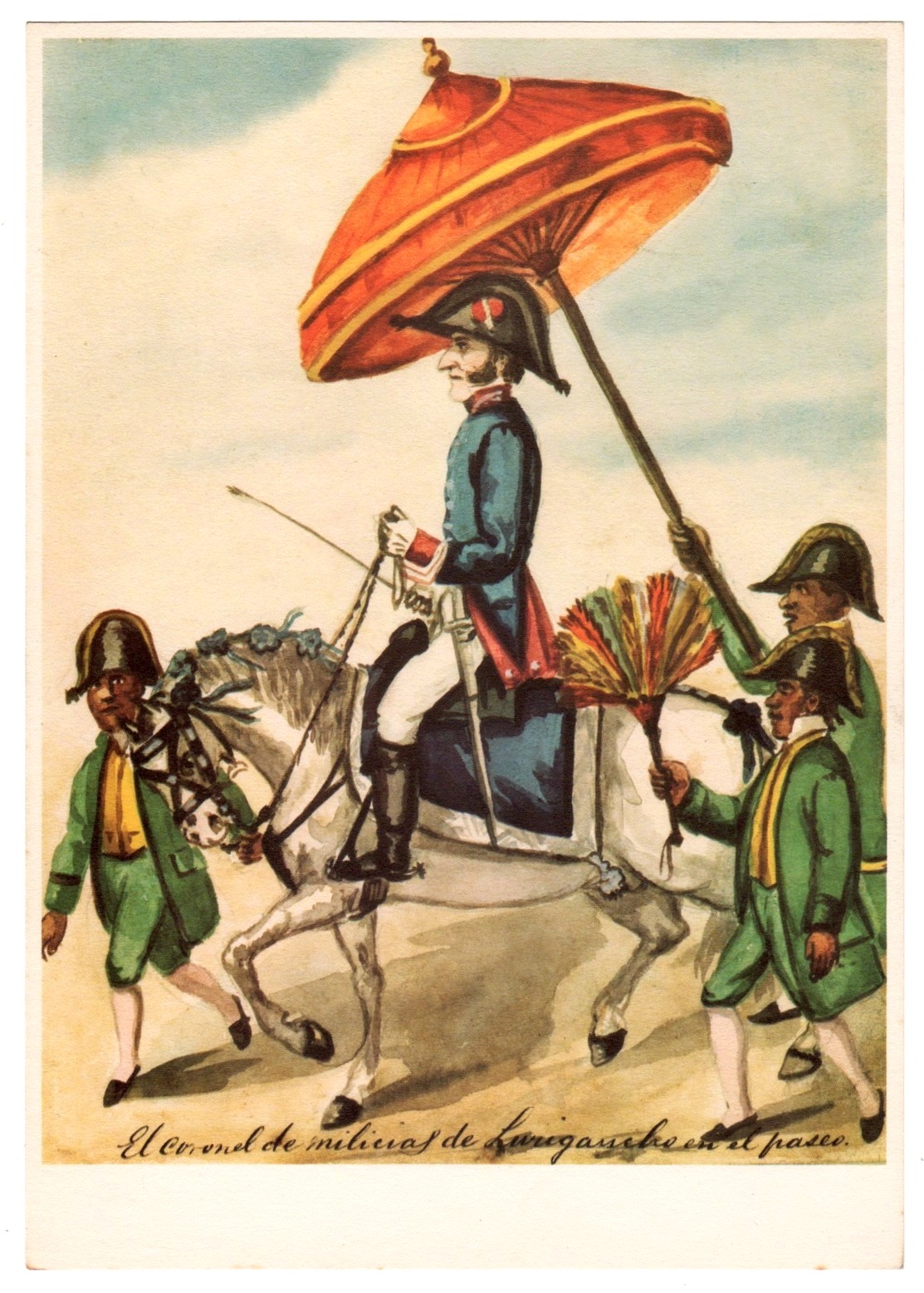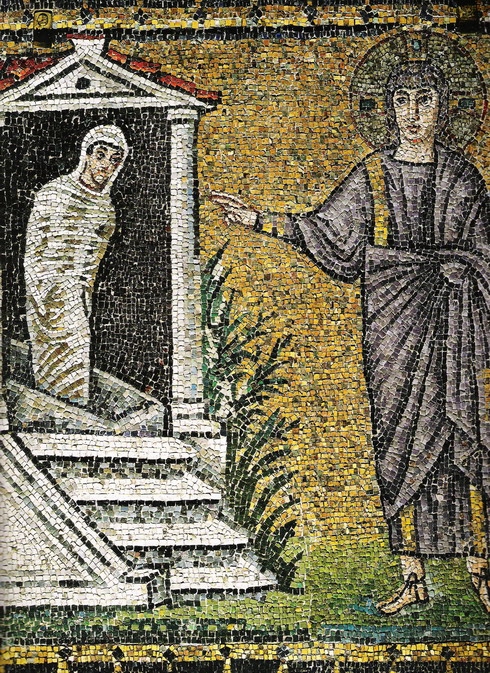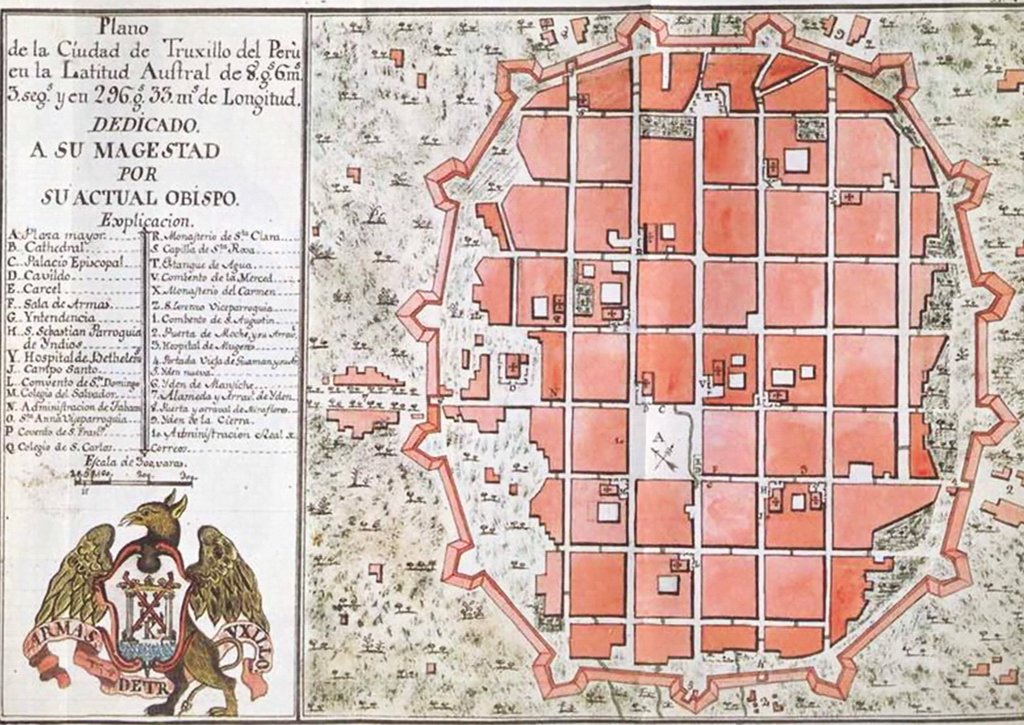|
Church Of Saint Lazarus, Lima
The Church of Saint Lazarus () is a Catholic church in Rímac District, part of the Historic Centre of Lima, Peru. Built in 1586, it was the first church built in the area. Since then it has been rebuilt several times after the damage left by the various earthquakes in Peru. It is located on block five of Jirón Trujillo, at the intersection with Francisco Pizarro Avenue. Up until the 19th century, the church gave the neighbourhood of San Lázaro its name, until it separated from Lima District as the district of Rímac. History The church is located in an area near the Rímac River that has been occupied since pre-Hispanic times. The suburb that formed around it was occupied by local Indians, blacks, the sick, friars and travelers. The first construction in the place was a leprosarium opened around 1563 by Antón Sánchez on the road to Trujillo. Then, with the authorisation of Viceroy Count of Nieva and Archbishop Jerónimo de Loayza, Sánchez built the hospital and the chur ... [...More Info...] [...Related Items...] OR: [Wikipedia] [Google] [Baidu] |
Catholic
The Catholic Church (), also known as the Roman Catholic Church, is the List of Christian denominations by number of members, largest Christian church, with 1.27 to 1.41 billion baptized Catholics Catholic Church by country, worldwide as of 2025. It is among the world's oldest and largest international institutions and has played a prominent role in the history and development of Western civilization.Gerald O'Collins, O'Collins, p. v (preface). The church consists of 24 Catholic particular churches and liturgical rites#Churches, ''sui iuris'' (autonomous) churches, including the Latin Church and 23 Eastern Catholic Churches, which comprise almost 3,500 dioceses and Eparchy, eparchies List of Catholic dioceses (structured view), around the world, each overseen by one or more Bishops in the Catholic Church, bishops. The pope, who is the bishop of Rome, is the Papal supremacy, chief pastor of the church. The core beliefs of Catholicism are found in the Nicene Creed. The ... [...More Info...] [...Related Items...] OR: [Wikipedia] [Google] [Baidu] |
Afro-Peruvians
Black Peruvians or Afro-Peruvians are Peruvians of mostly or partially African descent. They mostly descend from enslaved Ethnic groups of Africa, Africans brought to Peru after the arrival of the conquistadors. Early history The first Africans arrived, as enslaved people, with the conquerors in 1521, and some, taken by force, with colonists to work, for no payment, in 1525. Between 1529 and 1537, when Francisco Pizarro was granted permits to import 363 Africans to colonial Peru, a large group of Africans were captured in order to provide, by force, labor for public construction, building bridges and road systems. They also fought alongside the conquistadors as soldiers and worked as personal servants and bodyguards. In 1533, enslaved Afro-Peruvians accompanied Spaniards in the conquest of Cuzco. Two types of African people were forced to Peru. Those born in Africa were commonly referred to as ''Bozal Spanish, negros bozales'' ("untamed blacks"), which was also used in a deroga ... [...More Info...] [...Related Items...] OR: [Wikipedia] [Google] [Baidu] |
Bell Tower
A bell tower is a tower that contains one or more bells, or that is designed to hold bells even if it has none. Such a tower commonly serves as part of a Christian church, and will contain church bells, but there are also many secular bell towers, often part of a municipal building, an educational establishment, or a tower built specifically to house a carillon. Church bell towers often incorporate clocks, and secular towers usually do, as a public service. The term campanile (, also , ), from the Italian ''campanile'', which in turn derives from ''campana'', meaning "bell", is synonymous with ''bell tower''; though in English usage campanile tends to be used to refer to a free standing bell tower. A bell tower may also in some traditions be called a belfry, though this term may also refer specifically to the substructure that houses the bells and the ringers rather than the complete tower. The tallest free-standing bell tower in the world, high, is the Mortegliano Bell To ... [...More Info...] [...Related Items...] OR: [Wikipedia] [Google] [Baidu] |
Parish
A parish is a territorial entity in many Christianity, Christian denominations, constituting a division within a diocese. A parish is under the pastoral care and clerical jurisdiction of a priest#Christianity, priest, often termed a parish priest, who might be assisted by one or more curates, and who operates from a parish church. Historically, a parish often covered the same geographical area as a Manorialism, manor. Its association with the parish church remains paramount. By extension the term ''parish'' refers not only to the territorial entity but to the people of its community or congregation as well as to church property within it. In England this church property was technically in ownership of the parish priest ''Ex officio member, ex officio'', vested in him on his institution to that parish. Etymology and use First attested in English in the late 13th century, the word ''parish'' comes from the Old French , in turn from , the Romanization of Greek, Romanisation of ... [...More Info...] [...Related Items...] OR: [Wikipedia] [Google] [Baidu] |
1746 Lima–Callao Earthquake
The 1746 Lima–Callao earthquake occurred at on 28 October with a moment magnitude of 8.6–8.8 and a maximum Mercalli intensity of XI (''Extreme''). The epicenter was located about north-northwest of the capital Lima, which was almost completely destroyed, and the subsequent tsunami devastated the port city of Callao. It was the deadliest earthquake in Peru's history prior to the 1970 earthquake. Tectonic setting Peru lies above the convergent boundary where the Nazca plate is subducting beneath the South American plate at a rate of 61 mm per year. It has been the location for many large and damaging earthquakes since historical records began, most of which triggered devastating tsunamis. The southern segment of the Peruvian part of this plate boundary is affected by the presence of the Nazca aseismic ridge, on the downgoing plate. It also marks a major change in the subduction geometry between 'flat-slab' subduction to the northwest and normally dipping subduction to ... [...More Info...] [...Related Items...] OR: [Wikipedia] [Google] [Baidu] |
1687 Peru Earthquake
The 1687 Peru earthquake occurred at 11:30 UTC on 20 October 1687. It had an estimated magnitude of 8.4–8.7 and caused severe damage to Lima, Callao and Ica. It triggered a tsunami and overall, about 5,000 people died. Tectonic setting The earthquake occurred along the boundary between the Nazca plate and the South American plate. The earthquake is likely to be a result of thrust faulting, caused by the subduction of the Nazca plate beneath the South American plate. The coastal parts of Peru and Chile have a history of great megathrust earthquakes originating from this plate boundary, such as the 1960 Valdivia earthquake. Damage The port of Pisco was completely destroyed by the tsunami, with at least three ships being swept over the remains of the town. Characteristics The earthquake was probably followed by another large event further to the south. A magnitude of 8.7 has been estimated from tsunami runup heights and by comparison with the earthquake of 1974. The tsunami wa ... [...More Info...] [...Related Items...] OR: [Wikipedia] [Google] [Baidu] |
1586 Lima–Callao Earthquake
The 1586 Lima–Callao earthquake () was an earthquake that occurred on July 9 along the coast of Peru, near the capital Lima. A section of the Peruvian coast, stretching from Caravelí to Trujillo, north to south, was severely damaged by the earthquake. Major destruction occurred in the capital city Lima as well. The estimated moment magnitude () 8.1 earthquake triggered a locally damaging tsunami up to . This was the first major earthquake to strike the city of Lima since its establishment in 1535. Tectonic setting The coast of Peru lies a 7,000-km-long convergent boundary where the oceanic Nazca Plate subducts or dives beneath the continental South American Plate. The Peru–Chile Trench marks the location where the two plates meet and converge. Subduction at the plate boundary rate varies throughout the 7,000 km length, at 65 mm/yr towards the north, and up to 80 mm/yr in the south. The presence of active subduction can produce large earthquakes when elastic energy along t ... [...More Info...] [...Related Items...] OR: [Wikipedia] [Google] [Baidu] |
Patron Saint
A patron saint, patroness saint, patron hallow or heavenly protector is a saint who in Catholicism, Anglicanism, Eastern Orthodoxy or Oriental Orthodoxy is regarded as the heavenly advocate of a nation, place, craft, activity, class, clan, family, or person. The term may be applied to individuals to whom similar roles are ascribed in other religions. In Christianity Saints often become the patrons of places where they were born or had been active. However, there were cases in medieval Europe where a city which grew to prominence obtained for its cathedral the remains or some relics of a famous saint who had lived and was buried elsewhere, thus making them the city's patron saint – such a practice conferred considerable prestige on the city concerned. In Latin America and the Philippines, Spanish and Portuguese explorers often named a location for the saint on whose feast or commemoration day they first visited the place, with that saint naturally becoming the area's patron ... [...More Info...] [...Related Items...] OR: [Wikipedia] [Google] [Baidu] |
Lazarus Of Bethany
Lazarus of Bethany is a figure of the New Testament whose life is restored by Jesus four days after his death, as told in the Gospel of John. The resurrection is considered one of the miracles of Jesus. In the Eastern Orthodox Church, Lazarus is Veneration, venerated as Righteous Lazarus, the Four-Days Dead. The Eastern Orthodox and Catholic Church, Catholic traditions offer varying accounts of the later events of his life. In the context of the Book of Signs, seven signs in the Gospel of John, the raising of Lazarus at Bethany – today the town of Al-Eizariya in the West Bank, which translates to "the place of Lazarus" – is the climactic narrative: exemplifying the power of Jesus "over the last and most irresistible enemy of humanity: death. For this reason, it is given a prominent place in the gospel." The name ''Lazarus'' is frequently used in science and popular culture in reference to apparent restoration to life; for example, the scientific term Lazarus taxon denotes o ... [...More Info...] [...Related Items...] OR: [Wikipedia] [Google] [Baidu] |
Jerónimo De Loayza
Jerónimo de Loayza y González, O.P. (1498 – October 25, 1575), was a Spanish Dominican friar and missionary, who was selected as the first Archbishop of Lima. ''(in Latin)'' He established the first hospital, initiated construction of the early cathedrals, and also established schools to educate the sons of both the Spanish rulers and Inca elite families. He supported the founding of the University of San Marcos in Lima. Life Loayza was born in Trujillo in the Province of Cáceres. He entered the Dominican Order as a teenager, and after his religious profession, pursued his studies at Valladolid and at the Monastery of San Pablo in Córdoba. His superiors sent Loayza to the missions of New Spain in 1529, where he worked in Cartagena serving both the Spanish colonists and the native Americans of the city. In recognition of the reputation he had gained in this, he was appointed the first Bishop of Cartagena on December 5, 1537 by Emperor Charles V, which was approve ... [...More Info...] [...Related Items...] OR: [Wikipedia] [Google] [Baidu] |
Diego López De Zúñiga, 4th Count Of Nieva
Diego López de Zúñiga y Velasco, 4th Count of Nieva () (c. 1510 – February 20, 1564 in Lima, Peru) was the fourth viceroy of Peru, from April 17, 1561 to his death on February 20, 1564. Early career López de Zúñiga was a knight of the military Order of Santiago, and from 1553 to 1559, governor of Galicia. He was named Peruvian viceroy in late 1560 by King Philip II to replace Andrés Hurtado de Mendoza, 3rd Marquis of Cañete, who had been recalled. López de Zúñiga arrived in Lima and took up the office on February 20, 1561. After his arrival in Peru but before reaching the capital, he sent impertinent messages to his predecessor, just before the death of the latter. Some said that the recall and the insulting communications from López de Zúñiga had brought about the death of Hurtado de Mendoza. Viceroy of Peru On December 14, 1561 he ordered Gómez de Tordoya to explore the River Tono, and on December 24, 1561 he commissioned Juan Nieto to conquer the te ... [...More Info...] [...Related Items...] OR: [Wikipedia] [Google] [Baidu] |
Trujillo, Peru
Trujillo (; ; Mochica language, Mochica: ''Cɥimor'') is a city in coastal northwestern Peru and the capital of the Department of La Libertad. It is the third most populous city and center of the List of metropolitan areas of Peru, third most populous metropolitan area of Peru. It is located on the banks of the Moche River, near its mouth at the Pacific Ocean, in the Moche Valley. This was a site of the great prehistoric Moche (culture), Moche and Chimu cultures before the Inca conquest and subsequent expansion. The Independence of Trujillo from Spain was proclaimed in the Historic Centre of Trujillo on December 29, 1820, and the city was honored in 1822 by the Congress of the Republic of Peru with the title "Meritorious City and Faithful to the Fatherland", for its role in the fight for Peruvian independence. Trujillo is the birthplace of Peru's judiciary. In 1823, Riva Agüero settled in Trujillo after being deposed, but his government lacked legal recognition, while the Cong ... [...More Info...] [...Related Items...] OR: [Wikipedia] [Google] [Baidu] |





